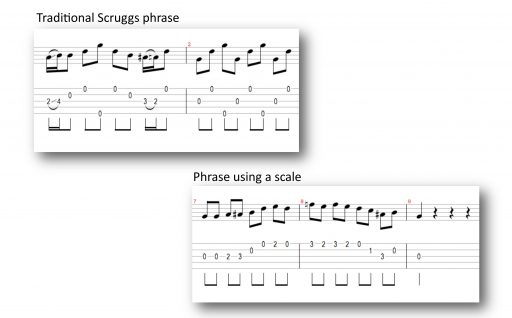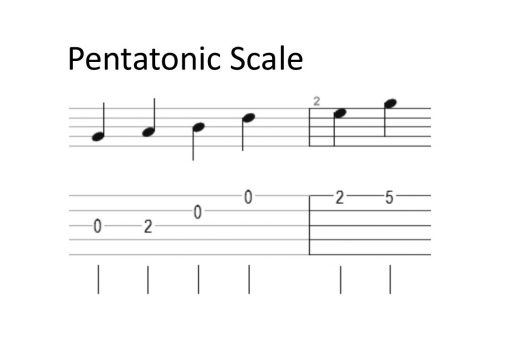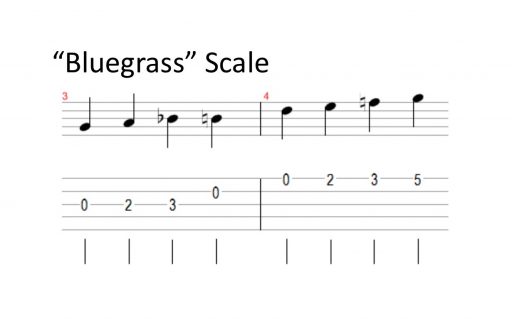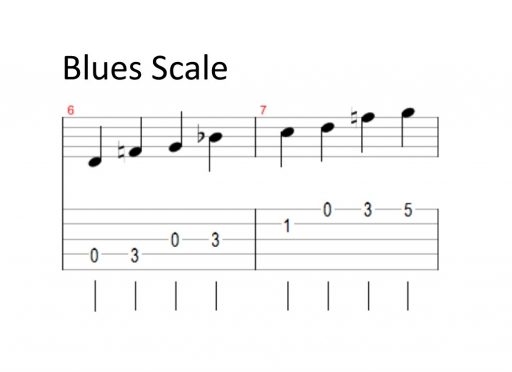 Unlocking scales on the banjo is the secret to breaking out beyond bluegrass, and being able to sound great in all kinds of new music. Let’s say you are a decent picker, and can play in Scruggs Style and know how to play backup and lead. Perhaps you even have some melodic style fiddle tunes under your belt, or some hot single-string licks. But your playing still sounds “bluegrassy”, and there are times when you lay awake at night thinking “what else is out there? Why cant I play more blues, or rock, or jazz on my banjo??”
Unlocking scales on the banjo is the secret to breaking out beyond bluegrass, and being able to sound great in all kinds of new music. Let’s say you are a decent picker, and can play in Scruggs Style and know how to play backup and lead. Perhaps you even have some melodic style fiddle tunes under your belt, or some hot single-string licks. But your playing still sounds “bluegrassy”, and there are times when you lay awake at night thinking “what else is out there? Why cant I play more blues, or rock, or jazz on my banjo??”
Well it all starts with re-thinking the role of the banjo. In the traditional bluegrass model, we follow the Gospel of Earl Scruggs: play Boomchucks for backup and then use Rolls and Licks for lead playing. This gives us that classic banjo sound which is great for bluegrass and country music. But this doesn’t always work when we apply it to other forms of music, as many of us discover when we stumble into a non-traditional jam and end up getting mauled.
So how do we break out of the Scruggs Style mold? We do this by changing our role from playing bluegrass licks to treating the banjo more like a guitar, and learning to play different scales and rhythms. Think of it this way: a traditional bluegrass player will comp along and then when it is time for their lead, they will launch into a flurry of Scruggs Style roll-based licks. A more modern picker (think Bela Fleck or Ryan Cavenaugh) will lay back and keep a low profile, but then when their lead comes around they will instead play actual “melodic phrases”. This means that instead of using Rolls, they will play out of scale positions, creating note-for-note melodies instead.
Let’s look at a visual example of how these two approaches differ:

Even to an untrained eye it is obvious that the traditional Scruggs phrase jumps around more, and has less of a noticeable “melody” to it. By contrast the scale phrase climbs up and down, having more of a “flow” and creating an actual melody. Now, this is not to suggest one is better than the other, it is all a matter of taste, and in most bluegrass settings the busier Scruggs licks work just fine. But the problems arise when you are presented with music that has little or nothing to do with bluegrass, because playing Scruggs style in these situations often sounds out of place, and even annoying.
So now we are presented with the challenge of learning to play the banjo to create melodies, not Rolls and licks that only approximate them. And to create melodies, we need to go back to the very DNA of melody… the scale. But not to worry, no one is going to be learning “Do Re Mi” and playing Twinkle Star here. We are going to go straight to the good stuff, the scales that match different styles of music…yes, there is a scale for Blues, and a scale for Country, and even scales for Gypsy and Middle Eastern music. In fact, there are more scales on the banjo than on a 500 pound tuna. And the good new is, we will hand pick the really cool ones for you so you don’t have to wade through piles of TAB. So are you ready to take the banjo beyond bluegrass? Well then let’s meet the cool scales…
First, the is the ancestor of all scales, the “pentatonic”. Don’t let the scary name fool you, this is one of the easiest scales to play, being that it only has five notes.

The reason we want to know this scale is that is forms the basis of much of rock and roll and blues, and when you add the “blue notes” (the flat 3rd and 7th) we get probably the most useful scale ever for improvisation, which we call the Bluegrass Scale. Here’s how that is played:

As you can hear, it has more of a bluesy flavor, and gets a lot of use in folk, country and bluegrass improvisation. Then we have the ever-popular Blues Scale…

This scale is a must-have, as it is used in everything from Rock and Roll and Roll to Old Timey music, and when you start using it to improvise it is hard to make a bad note! So how do we get these scales up to snuff and ready to go? Well, that’s where it gets a little more tricky. See, we can’t just learn them in the key of G (like the examples we just showed you), because then we would be stuck in one key. It is necessary to learn them in what are called movable shapes, so that we can then move the scale up and down the neck to match whatever key the song is in. So, if we were to take that first Pentatonic Scale in G and put it into a movable shape, it would look like this:
So now with this shape, wherever the red dot is becomes your new key. So since in the picture the red dot is at 4th string, 5th fret, that is the key of G. Let’s say you moved that whole shape up two frets, guess what…now you’re in A! Get it? As you can imagine, knowing your scales in movable shapes like this makes them a thousand times more useful.
So if you’v been feeling the urge to break away from Wagon Wheel and Rocky Top, your ticket out is to learn banjo scales and start using them to improvise. Ready? Then get out your note pad, tune up your banjo and watch this awesome tutorial on how to unlock all the secrets of playing scales on your banjo; it will change the way you play forever…